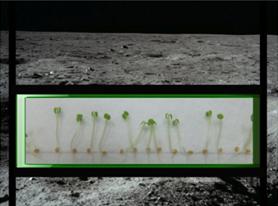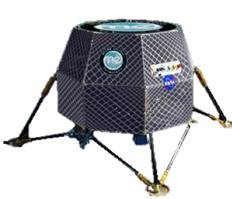NASA plans to send to the moon live plants in 2015 in the framework of the Lunar X Prize by Google
 Bashny.Net
Bashny.Net

As already mentioned before, now the space industry, space tourism and all the other "cosmic", developing, and quite active. There are new space programs, the purpose of which - the study of near and far space, as well as the development of the planets of the solar system. These programs consist of a plurality of stages, and one of them - the "landing" of living organisms, plants, on the Moon, 2015. And it is - not a fantasy, but a very real project of NASA.
Agency can not, unfortunately, now send plants on the moon on their own, so NASA will cooperate in this matter with the winner of the program Lunar X Prize from Google. This program, remember, is devoted to the development of private "lunar" projects. More information can be found here . So, the winner of the program from Google, at the request of NASA, along with its lunar device will launch the satellite Earth kg weight, which is a closed life support system for the plants.

Under the plan, the plants should be discharged to the surface of the moon (for a total of three plant species - turnips, basil and Arabidopsis). The purpose of all of this experiment - to see how living organisms will feel on the moon in high background radiation, gravity and other general totality of "lunar factors." If all goes well, probably, and the person will live a normal life and work on the Moon. Otherwise ... well, we're all optimistic in this respect, is not it? Scientists hope that the plant will be able to live and reproduce in the usual way, for a long time.
The results of the project can be evaluated after only 2 weeks after the "moon landing" of plants. If plants survive 2 weeks, it will show that live on the moon, in general, it is possible. After 60 days, if the plants will feel normal, it will be possible to say with confidence that meiosis is possible under the conditions of the lunar environment. After 180 days it will become clear how radiation affects the dominant and recessive genetic traits.
Well, hold on longer than "plant astronauts", the more valuable results get science.
Via nasa
Source: habrahabr.ru/post/204924/
Tags
See also
Each marsonavtu - a bouquet of NASA. Test of survival of conventional plants on Mars
Back to the Moon - a new space race
10 technologies that should be remembered in 2015
The space of the home, part 4: how will we live on Venus
Camera Einstein as a photographer shows a time
As the bats were to bomb Japan (12 pictures)
Facts about space exploration
Scientists want to learn how to grow potatoes on Mars
In Russia increases the pressure of lobbyists "post-mortem" organ donation
10 unsolved mysteries of the Solar system

















